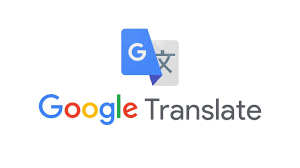Breaking Barriers: Google Translate Redefines Language with Gender-Specific Translations
Discover how Google Translate is revolutionizing language via deciphering the nuances of gender-unique translations. Mind-blowing revelations look ahead to!
Table of Contents
- Understanding the idea of gender-unique translations
- Examining the cultural and social impact
- Ethical concerns and linguistic accuracy
- Public reaction and controversy
- Suggested upgrades and hints
- Conclusion
Language is a powerful tool that shapes our knowledge of the sector, society, and ourselves. It has the ability to reflect and support cultural norms, which consist of the ones regarding gender. In an attempt to undertaking conventional language conventions, Google Translate presently added gender-specific translations. This update opens up new possibilities in conversation and displays a step toward extra inclusivity.
Understanding the idea of gender-specific translations
Google Translate’s gender-particular translations are the stop result of sophisticated algorithms that determine gender primarily based on context, grammar, and linguistic styles. While now not all languages presently resource this feature, it is regularly increasing its attain. For instance, in languages inclusive of French and Spanish, adjectives and pronouns can variety primarily based on the gender of the noun being defined.
These gender-particular translations purpose to reflect the nuanced ways that languages explicit gender. By recognizing and adapting to those versions, Google Translate presents users with a more real and correct translation enjoy. For instance, the translation for “engineer” in Spanish differs depending on whether the engineer is male or lady.
Examining the cultural and social effect
Google Translate’s gender-particular translations have sparked discussions across the reinforcement of stereotypes. Critics argue that associating superb professions, adjectives, or roles completely with a selected gender perpetuates traditional gender norms and bounds societal development towards gender equality.
On the alternative hand, proponents of gender-specific translations argue that they reflect the fact of language usage in plenty of societies. Languages evolve based totally totally on cultural practices and social structures, and gender is deeply embedded inside the cloth of linguistic expression. Gender-specific translations provide a platform for acknowledging and embracing those linguistic nuances, celebrating variety, and fostering deeper cultural information.
Moreover, gender-unique translations have the potential to persuade character conduct positively. By imparting gender-specific translations, Google Translate empowers people to express their identity and communicate in a way that aligns with their cultural and linguistic history. This inclusivity can make a contribution to a greater sense of belonging and foster cultural delight.
Ethical issues and linguistic accuracy
Ensuring linguistic accuracy is crucial for any translation company, and gender-unique translations are not exempt from this requirement. Critics argue that translation algorithms might not continuously correctly seize the complexity of gender contexts, in all likelihood reinforcing risky stereotypes or inaccurately categorizing individuals based totally on their gender identity.
Addressing this task calls for non-prevent improvement and man or woman comments. Google Translate should strike a touchy balance among linguistic precision and social duty, running carefully with linguistic specialists and community input to refine and decorate the accuracy of gender-specific translations.
Public response and controversy
Google Translate’s gender-unique translations have ignited a mixture of reactions from customers, linguists, and activists. Some encompass these translations as a modern-day jump forward, appreciating the platform’s popularity of gender nuances in language. In evaluation, others explicit issues about the functionality consequences on gender equality, arguing that language want to evolve toward greater gender-neutral solutions.
To address the debate and facilitate a nice communicate, it’s miles important to pay attention to and widely known the views of all stakeholders worried. Engaging in an open conversation and searching for commonplace ground can help manual the development of translation technology in the direction of inclusive language practices.
Suggested enhancements and guidelines
As Google Translate maintains to comply, there are strategies to further beautify the neutrality of gender-precise translations. By partnering with linguistic experts and cultural businesses, Google can refine its algorithms and comprise numerous perspectives to make certain more accurate and inclusive translations.
Moreover, it’s far crucial to encourage customers to offer feedback and guidelines for improvement. By actively regarding the network and thinking about their insights, Google Translate can foster a person-centric method that higher aligns with the diverse desires and expectancies of its clients worldwide.
Conclusion
In redefining language via gender-particular translations, Google Translate takes an crucial step in the direction of inclusivity. While the talk surrounding the ones translations continues, it’s miles vital to understand the capability powerful impact they may be capable of have on improving cultural knowledge and facilitating self-expression.
Combining linguistic accuracy with social obligation, Google Translate ought to hold refining its algorithms and actively searching for consumer input. By doing so, the platform cannot most effective damage language boundaries however additionally make contributions to a extra inclusive and respectful international communication.
As language and society preserve to evolve, translation technologies should adapt, tough traditional linguistic norms to reflect the severa realities and identities found in our worldwide. Google Translate’s gender-unique translations constitute a ambitious move toward a greater inclusive, accurate, and proper translation experience.
































